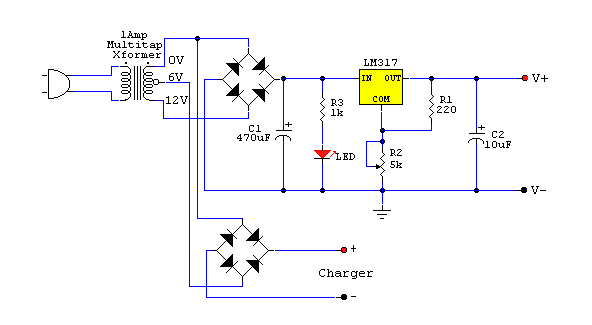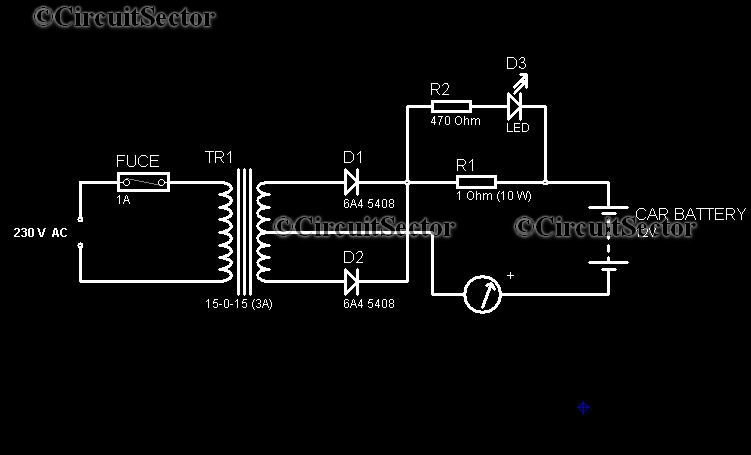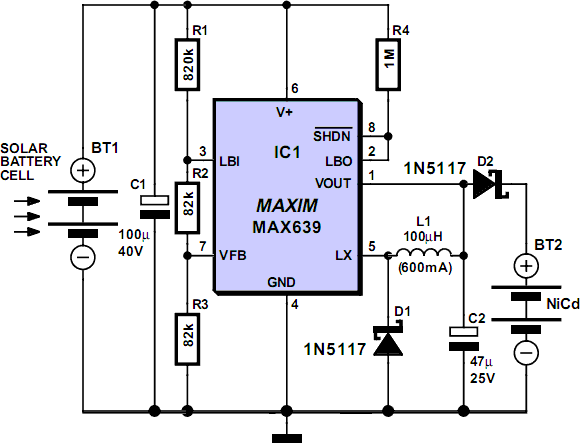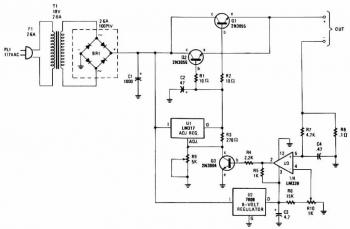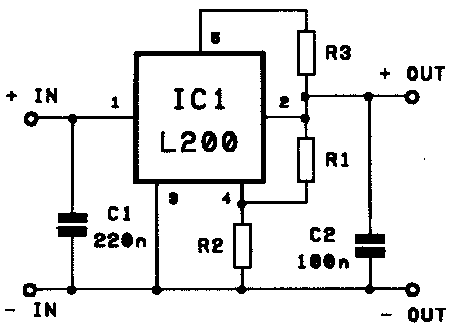
Float Charger For NiMH Cells
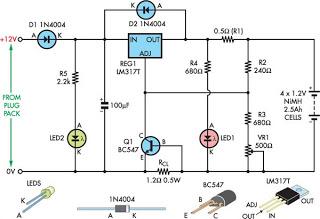
Although not a new device, the LM317 is still a high-performance regulator. Its output voltage is essentially immune to fluctuations in load and supply voltage.
The LM317 is a versatile adjustable linear voltage regulator widely used in various electronic applications. It can provide a stable output voltage ranging from 1.25V to 37V, making it suitable for a diverse range of power supply needs. The device can deliver output currents up to 1.5A, depending on the thermal conditions and the heat sink used.
The LM317 operates by maintaining a constant output voltage despite variations in input voltage and load current. This stability is achieved through the use of an internal feedback mechanism. The output voltage can be adjusted by connecting two external resistors, which form a voltage divider. The formula for determining the output voltage \( V_{out} \) is given by:
\[
V_{out} = V_{ref} \left(1 + \frac{R2}{R1}\right) + I_{adj} \cdot R2
\]
where \( V_{ref \) is typically 1.25V, \( R1 \) is connected between the output and the adjustment pin, and \( R2 \) is connected between the adjustment pin and ground. The adjustment pin current \( I_{adj} \) is generally negligible for most applications.
In terms of application, the LM317 is commonly used in power supply circuits, battery chargers, and other devices requiring a regulated output voltage. It is important to include appropriate bypass capacitors at the input and output to ensure stability and minimize noise. Typically, a 0.1µF ceramic capacitor is placed at the input, and a 1µF tantalum or electrolytic capacitor is used at the output.
Thermal management is crucial when using the LM317, as excessive heat can lead to thermal shutdown. Therefore, it is advisable to use a heat sink if the output power dissipation exceeds the regulator's thermal limits. The LM317 is also protected against overcurrent and overheating, ensuring reliable operation under varying load conditions.
Overall, the LM317 remains a favored choice in electronic design due to its robustness, ease of use, and adaptability to various voltage regulation tasks.Although not a new device, the LM317 is still a high-performance regulator. Its output voltage is essentially immune to fluctuations in load, supply volta.. 🔗 External reference
The LM317 is a versatile adjustable linear voltage regulator widely used in various electronic applications. It can provide a stable output voltage ranging from 1.25V to 37V, making it suitable for a diverse range of power supply needs. The device can deliver output currents up to 1.5A, depending on the thermal conditions and the heat sink used.
The LM317 operates by maintaining a constant output voltage despite variations in input voltage and load current. This stability is achieved through the use of an internal feedback mechanism. The output voltage can be adjusted by connecting two external resistors, which form a voltage divider. The formula for determining the output voltage \( V_{out} \) is given by:
\[
V_{out} = V_{ref} \left(1 + \frac{R2}{R1}\right) + I_{adj} \cdot R2
\]
where \( V_{ref \) is typically 1.25V, \( R1 \) is connected between the output and the adjustment pin, and \( R2 \) is connected between the adjustment pin and ground. The adjustment pin current \( I_{adj} \) is generally negligible for most applications.
In terms of application, the LM317 is commonly used in power supply circuits, battery chargers, and other devices requiring a regulated output voltage. It is important to include appropriate bypass capacitors at the input and output to ensure stability and minimize noise. Typically, a 0.1µF ceramic capacitor is placed at the input, and a 1µF tantalum or electrolytic capacitor is used at the output.
Thermal management is crucial when using the LM317, as excessive heat can lead to thermal shutdown. Therefore, it is advisable to use a heat sink if the output power dissipation exceeds the regulator's thermal limits. The LM317 is also protected against overcurrent and overheating, ensuring reliable operation under varying load conditions.
Overall, the LM317 remains a favored choice in electronic design due to its robustness, ease of use, and adaptability to various voltage regulation tasks.Although not a new device, the LM317 is still a high-performance regulator. Its output voltage is essentially immune to fluctuations in load, supply volta.. 🔗 External reference
